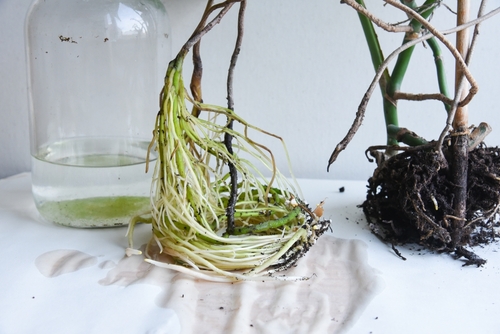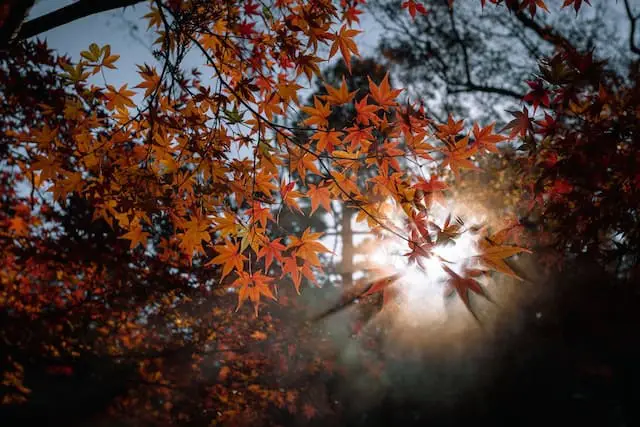Have you noticed that your Japanese Maple tree is not looking as healthy as it used to? It is possible that you are simply giving the tree too much water. More importantly, are there any Japanese Maple overwatering symptoms?
There are several symptoms to look out for when it comes to overwatering your Japanese Maple tree. These symptoms include verticillium wilt, root rot, leaves that turn brown or black, and leaves that are yellow when they should not be.
If you see these signs, it is important to act quickly to save your Japanese Maple tree from overwatering.
If you notice any of these symptoms on your Japanese Maple tree, it is possible that the problem is that you are just giving the tree too much water. These signs are hard to notice, but the sooner you act, the more likely you are to save your Japanese Maple tree.
By adjusting your watering schedule, improving drainage, and pruning any damaged or diseased branches, you can help your Japanese Maple tree recover and thrive once again. Remember, with proper care and attention, your Japanese Maple can be a beautiful and long-lasting addition to your landscape.
Japanese Maple Overwatering Symptoms

It is hard to know if you have over-watered your Japanese Maple tree, but there are some signs that you can look out for. These signs include:
- You notice verticillium wilt
- You notice root rot
- There are black and brown spots on the leaves
- Leaves are sagging and yellow
These are some of the things to keep an eye out for when it comes to overwatering your Japanese Maple tree. Fortunately, if you do start to see signs that your Japanese Maple tree is being overwatered, there are things that you can do to try to save the tree and make it healthy again.
Japanese Maple Trees and Verticillium Wilt
Verticillium wilt is a fungus that lives in the soil and it kills hundreds of different plants. Japanese Maple trees are one of the plants that are vulnerable to verticillium wilt and it is hard to prevent the disease from infecting your trees.
Some of the signs to look out for to see if a tree is suffering from verticillium wilt are curled and drooping leaves, and foliage that is gray or yellow.
Rotting Roots on Japanese Maple Trees

Root rot is a common sign that you are overwatering your plant. You might not notice this right away though, because the roots of your Japanese Maple are buried under the soil.
You can try to partially dig up the soil surrounding the tree to expose the roots and inspect them for signs of rot. Some of the things to keep an eye out for in this case are sores and cankers.
Brown Spots on the Leaves of Japanese Maple Trees
Another sure fire way to know if your Japanese Maple is getting too much water is if you start to notice brown spots on the leaves. This happens because the leaves are receiving too much moisture from the roots that are drowning in the soil.
This prevents the roots from absorbing all of the nutrients that they need, so the leaves cannot become their proper colors. Discolored leaves are one of the most common symptoms of a Japanese Maple tree getting too much water.
Weak and Yellow Leaves on Japanese Maple Trees
Another way that you can easily tell if you are overwatering your Japanese Maple tree is to see if the leaves are turning yellow and weak.
Normally a healthy plant will produce green leaves, but depending on what time of year it is, the Japanese Maple tree leaves might turn red, purple, or even burgundy..
If the leaves on your Japanese Maple tree have turned yellow, then this is a sign that it is getting too much water and the roots are not getting enough oxygen. Leaf discoloration is one of the most common signs of overwatering in Japanese Maple trees.
How to Save Your Japanese Maple Tree

It can be hard to notice that your tree is suffering from overwatering until it is too late. Once you notice that your tree has been getting too much water, there is very little that you can do to stop the harm from continuing.
However, there are a few things that you can do to save your tree if you are worried that it might be overwatered.
One of the first things that you can do is to see if you can dig up some of the water logged soil surrounding the tree. This will give the roots more room to breathe, which will let them heal faster. This also helps take excess moisture away from the drowning root system.
See a related post: Overwatered Pothos
Summary
You always want to make sure that your Japanese Maple tree is getting enough water, but you also want to make sure that it is not getting too much water. The signs of overwatering can be easy to miss at first, so you need to be careful while caring for your tree.
Some of the things to look out for when you suspect that your Japanese Maple tree is drowning include root rot, verticillium wilt, and sickly, yellow leaves.
Frequently Asked Questions
If you are concerned about over-watering your Japanese Maple trees, you probably have a lot of questions. These are the answers to the most common questions people have about Japanese Maple trees and overwatering them.
Can You Save a Japanese Maple Tree Dying from Overwatering?
If you realize that one of your Japanese Maple trees is dying from having too much water in the soil, do not panic. There are still things that you can do to save the tree.
The first of these things is to dig up some of the soil so that the roots have more room to breathe. This will help the roots recover from the moisture. If the Japanese Maple tree is suffering from severe root rot, you can try repotting the tree.
You should also keep your eyes peeled for any signs of verticillium wilt so that you can take action right away. It is almost impossible to save your tree once this fungus has already infected it. If you see signs of verticillium wilt in your tree, you will likely have to change the soil as soon as possible.
How Often Should You Water a Japanese Maple?
It is hard to know exactly how often to water your Japanese Maple tree, because you know that watering it too much or little will cause harm either way. But it turns out, the perfect amount of water for your trees depends on how much rain you have been getting lately.
Under normal weather, you should probably avoid watering your Japanese Maple tree more than twice a week. However, if you live in a place that is currently experiencing a drought, you might have to increase this by watering your trees four times a week to prevent them from dying of dehydration.
How Do You Know If a Japanese Maple Plant is Overwatered?
There are signs that you can look for to figure out if your Japanese Maple plant has been over watered. These include root rot, verticillium wilt, and brown spots on the leaves. Pay careful attention, because these signs are easy to miss.

Hey, I’m Lisa and I’ve been an avid gardener for over 30 years. I love writing, talking and living in the garden! Feel free to connect with me on my socials below

